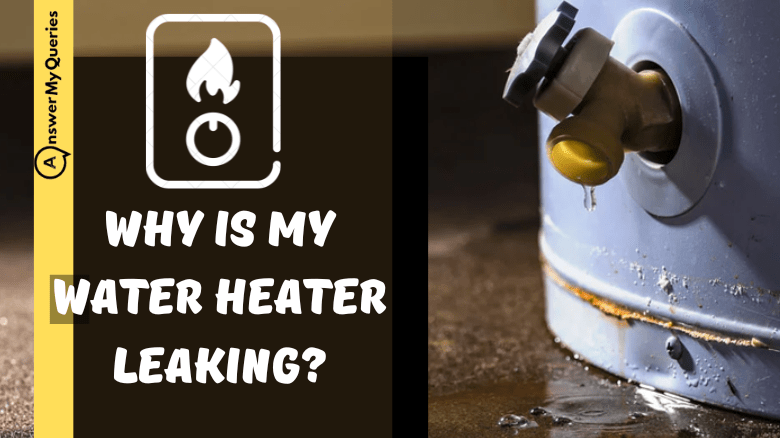
Why is My Water Heater Leaking? Check 5 Common Reasons Why Water Heaters Leak
Why is My Water Heater Leaking? A water heater is one of the most important appliances in our homes, providing us with hot water for our daily needs. However, a leaking water heater can cause significant damage to our homes and pose a danger to our health. In this blog post, we will discuss the common reasons why water heaters leak and what steps you can take to fix them.

Step 1: Determine the Location of the Leak
The first step in addressing a leaking water heater is to identify the location of the leak. Leaks can occur in different parts of the water heater, and the location of the leak will determine the cause and solution to the problem.
The most common places where water heaters leak includes the drain valve, the temperature and pressure relief valve, the tank itself, and the pipes that connect to the water heater. If you notice water around your water heater, start by inspecting these areas to determine where the leak is coming from.
Step 2: Check the Drain Valve
The drain valve is located at the bottom of the water heater and is used to drain the tank for maintenance or replacement. Over time, the valve can become loose or develop a leak. If you notice water coming from the drain valve, you can try tightening it with a wrench or replacing it altogether.
To replace the drain valve, turn off the power to the water heater and shut off the water supply. Attach a garden hose to the drain valve and place the other end in a drain or outside. Open the valve to drain the tank, remove the old valve, and install the new one. Once you have installed the new valve, refill the tank and turn on the power.
Step 3: Inspect the Temperature and Pressure Relief Valve
The temperature and pressure relief valve is an important safety feature that releases excess pressure and heat from the tank. If this valve is faulty or malfunctioning, it can cause water to leak from the water heater.
To check the temperature and pressure relief valve, turn off the power and water supply to the water heater. Locate the valve on the side or top of the water heater and lift the lever slightly to allow some water to flow out. If the valve does not release water, it may be stuck or clogged and will need to be replaced.
To replace the temperature and pressure relief valve, turn off the power and water supply to the water heater and drain the tank. Remove the old valve and install the new one, making sure it is properly aligned and tightened.
Step 4: Check the Tank
If the leak is coming from the tank itself, it may be due to corrosion or a crack in the tank. A leaking tank is a serious problem and may require a replacement of the entire water heater.
To determine if the tank is leaking, inspect the area around the tank for signs of water damage or rust. If you notice a leak, turn off the power and water supply to the water heater and drain the tank. Contact a professional plumber to determine if the tank can be repaired or if a replacement is necessary.
Step 5: Check the Pipes
Leaks can also occur in the pipes that connect to the water heater. Inspect the pipes for signs of corrosion or damage, and tighten any loose connections.
If the pipes are damaged or corroded, they will need to be replaced. Turn off the power and water supply to the water heater and drain the tank. Remove the damaged pipes and install new ones, making sure to properly align and tighten the connections.
Conclusion: Why is My Water Heater Leaking?
Why is My Water Heater Leaking? A leaking water heater can be a serious problem, but it is not always necessary to replace the entire unit. By identifying the location of the leak and addressing the problem early, you can avoid costly repairs and potential damage to your home. If you are unsure how to fix a leaking water heater, or if the problem persists after attempting these.





